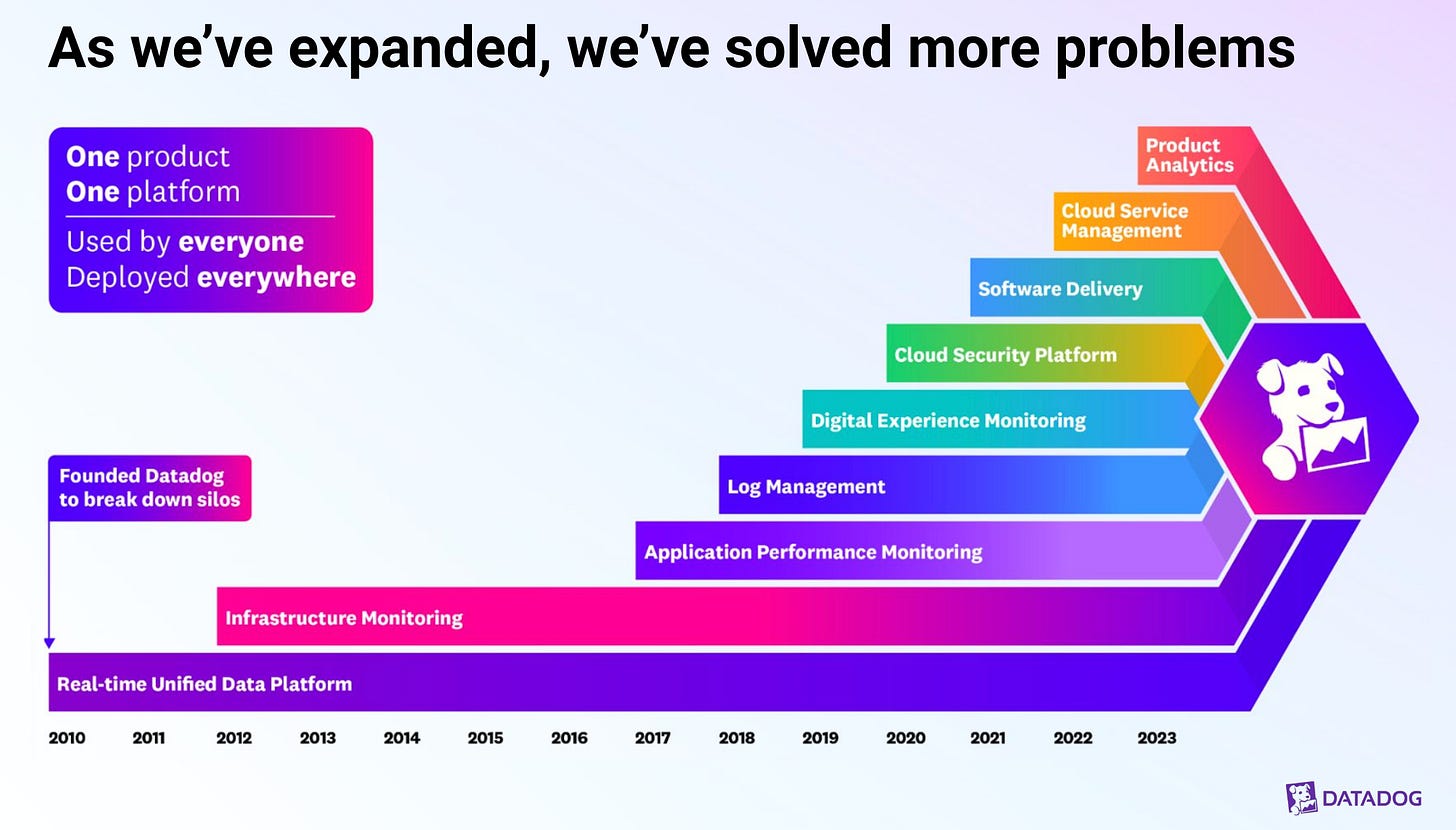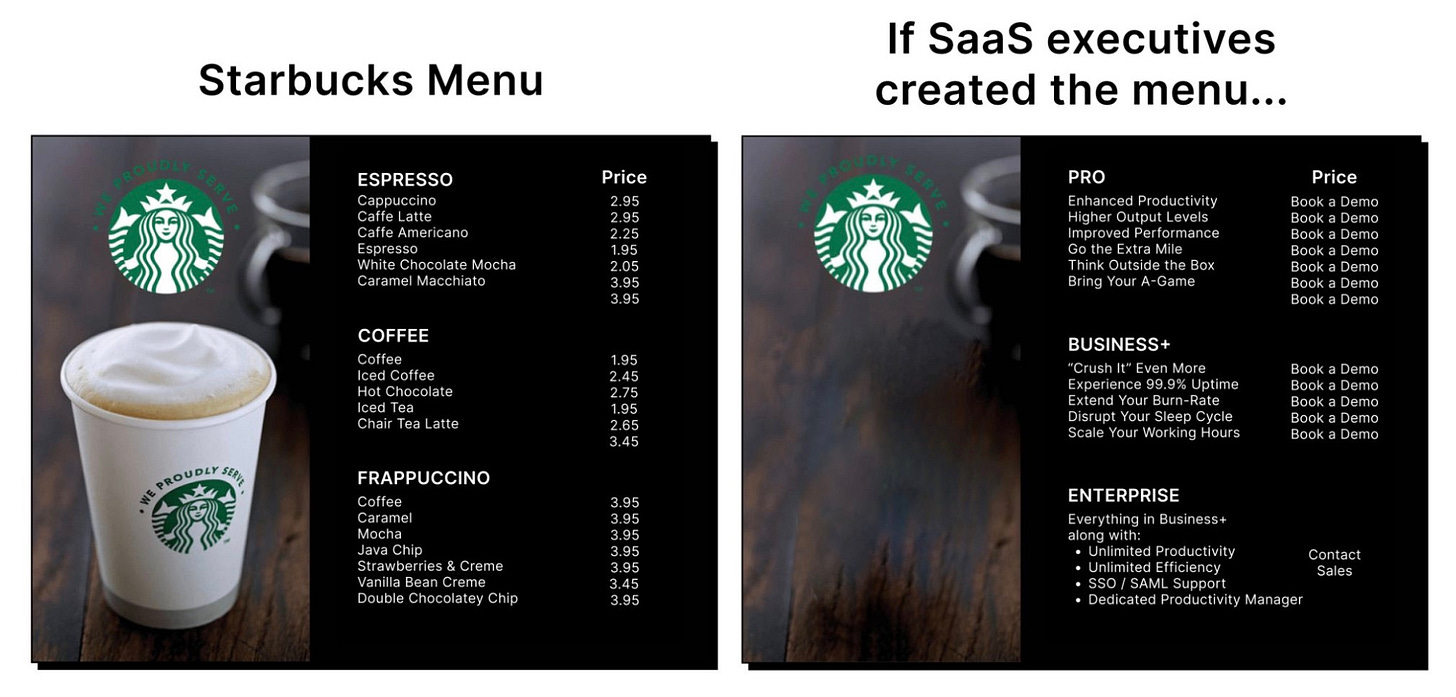The CMO Is Going Away
In B2B SaaS, "Chief Marketing Officer" will cede way to Chief Commercial Officer.
Prediction: The Chief Marketing Officer (CMO) is going away.
And no, I don’t mean Alex Rosemblat, Datadog’s outgoing CMO and forever CMO in my heart—although I do miss his leadership. His impact on product-led growth and the B2B SaaS customer acquisition model was profound. Reporting directly to Alex during my time at Datadog amid our VP of Product Marketing search was an absolute masterclass in B2B marketing.1
At the start of the year, Fortune Magazine published a piece highlighting the shrinking of CMOs in the C-suite of the Fortune 500. Titled “Fortune 500 companies are eliminating chief marketing officer roles as position loses C-suite clout”, it begins:
First, there was United Parcel Service, which said in December it was eliminating the CMO role. One week later, marketplace Etsy said it would do the same by merging CMO responsibilities under its operations chief. Directly before the new year, it was Walgreens’ turn to bid adieu to its CMO, distributing the job’s functions to other senior leaders.
These companies’ elimination of a standalone CMO role makes them just the latest in a long line of big corporations to make the same cut in the last few years. Among them are Lowe’s, Hyatt Hotels, McDonald’s, Johnson & Johnson, Uber, and Lyft.
I can’t speak to consumer companies since that’s not where I’m building my career, but I believe the standalone CMO title is outdated in B2B SaaS—particularly those with technical end users. I predict the CMO in the C-suite (i.e., reporting to the CEO) will go extinct in my career lifetime. And I predict it will be replaced by the Chief Commercial Officer (CCO), whose responsibilities marry Sales and Marketing.
I first had this thought when I worked in investor relations for B2B software from Series D to IPO at The Blueshirt Group (which, by the way, represented Reddit in its soaring 48% debut on the public markets last week. Congrats team!)
It wasn’t immediately clear to me, then a non-marketer whose background was in finance, what marketing meant for B2B software businesses. Did technical products (sold to CIOs, CISOs, and CTOs at the highest levels) need to drive brand awareness and product promotions in the same way B2C brands (sold to everyday consumers) do? Why hadn’t I seen ads for Elastic’s ELK Stack or Zscaler's Zero Trust Exchange at the Super Bowl?
Then, at Autodesk, which also remained without a CMO for much of my time there until ex-Peloton CMO Dara Treseder joined in 2022, Marketing seemed to function just fine focusing on (a) Sales and Channel enablement on one hand and (b) Content and Customer campaigns on the other hand. I’ve loved watching Dara bring bold ideas to Autodesk marketing—including splashy spots at the Academy Awards in partnership with celebrities like Ryan Reynolds. But the efficacy of using a B2C strategy for a B2B business remains unclear.2
Most recently at Datadog, I noticed our internal org was structured such that Marketing is not a standalone organization. Our CMO reports to our Chief Product Officer (CPO), so that all of Marketing rolls up to Product. This was fantastic for Datadog’s end user-focused go-to-market motion, since Marketing simply augmented an already fantastic product. Once new customers got into a free trial and started playing around in the product, they were extremely likely to convert into paying customers—leading to some of the industry’s most efficient customer acquisition metrics (e.g., via CAC payback, FCF margin to revenue growth).
All Marketing had to do was show customers the door.
This worked brilliantly because it focused Marketing on top-of-funnel leads, while Product built the requisite self-serve and OOTB features to drive customer conversion.
The challenge appears when a single-product company (like Datadog pre-2017) adds multiple SKUs (like Datadog circa 2019) to build a platform play (like Datadog post-IPO) and expands into adjacent use cases (like Datadog today with Security, Business, and Analytics personas).

Today, with 27+ SKUs in general availability, each with their own pricing, it can be challenging for CSMs to readily identify the best cross-sell / upsell products for their accounts. Sales enablement also becomes piecemeal, particularly if Product Marketing (the folks creating enablement content) is organized by product area and rolls up to the CMO, while Sales reports into the CRO and Customer Success to the COO.
Consider how go-to-market is structured today.
A Chief Marketing Officer (CMO) might own:
Growth (Demand Gen)
Product Marketing (PMM, Industry/Solutions, Competitive)
Content/Community (DevRel, Technical Writing)
Brand/Corporate (Comms, AR/PR, Events, Customer Marketing)
Marketing Ops
A Chief Revenue Officer (CRO) might own:
Sales Development (SDRs / BDRs)
Sales (AEs across Commercial, Mid-Market, Enterprise, Majors)
Channels & Alliances
Sales Engineering (Pre- and Post-sales)
RevOps (Sales Ops, Sales Enablement, GTM Analytics)
Finally, a Chief Operating Officer (COO) might own ongoing business such as:
Customer Success
Technical Account Management
Technical Escalations (Support)
Given the prominence of “expand” in the land-and-expand revenue model, it’s surprising how siloed these functions can be inside public SaaS companies.
I love this takeaway from Bessemer Venture Partners on the importance of investing in Product Marketing as early as possible to drive land-and-expand:
Product marketing first arose to prominence in B2B because of the divide between engineering and marketing. Marketing promises can tend to creep into hyperbole, causing CSMs to apologize and the company to appear fragmented. Product marketing unites sales, marketing, and product teams so there's one source of truth for messaging so everyone stays keyed into customers and how they think and what they buy.
Relying on a single function to create operational coherence for a wide product portfolio is simply not robust as a company grows. With the fiduciary duty to grow into their valuations—particularly as investor appetites push for a bigger and bigger TAM—venture-backed and publicly-traded B2B SaaS companies will inevitably expand into more adjacencies and build more products to sell.
What this means for folks on the inside is Product shipping more SKUs, Marketing launching more solutions, Sales getting goaled on higher targets—and reps (AEs and CSMs) risk overselling to customers. Getting sales enablement right is a perpetual challenge in technical B2B SaaS. Marketing can’t simply measure leads as an org-wide KPI without also measuring whether its tactics are sourcing opportunities, adding to ARR pipeline, and helping drive closed won. Aligning Marketing, Sales, and Customer Success under the same go-to-market owner makes sense.
The bench of executive talent with this cross-functional skillset may not be deep today. But I’m optimistic that more folks coming up in the B2B world will succeed by having broad-based Sales and Marketing experience.

When we search “CMO replaced by CCO” today, all first-page results today refer to a different CCO title: Chief Customer Officer. This is a straw man.
The real threat to the standalone CMO is the Chief Commercial Officer.
If any VPs of PMM with a technical B2B SaaS background are reading this, the position remains unfilled and is located in either New York or San Francisco. Say hello! 👋

